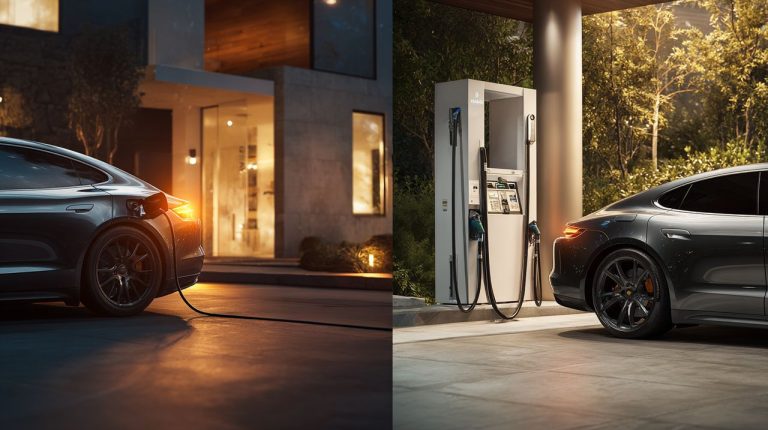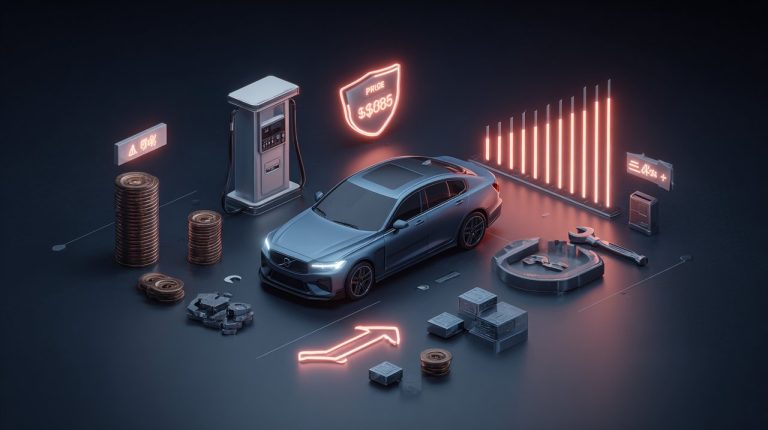Ever felt like your car is secretly bleeding your wallet dry, even after you’ve made the monthly payment? You’re definitely not alone. We often focus on the obvious numbers – that monthly loan payment, the gas bill – and maybe a vague idea of insurance or an oil change. But here’s the thing: this simplified view, while comforting, actually hides a far more complex and surprisingly costly truth.
That perceived affordability of a vehicle often masks what I like to call a vast financial iceberg. Most of its mass is hidden deep beneath the surface of those explicit, recurring payments you’re already factoring in.

Think about it: a car bought for $30,000. That initial price or loan payment feels manageable, right? Yet, its true cost over just five years can easily jump past $50,000, sometimes even doubling the original purchase price. This huge gap between what we think we’re spending and what we actually are is why understanding Total Cost of Car Ownership (TCO) isn’t just about budgeting. It’s a fundamental principle of financial literacy that profoundly impacts your long-term wealth.
The Financial Iceberg of Vehicle Ownership
The shine of a new car, or even a ‘good deal’ on a used one, often distracts us from a crucial reality: its true financial burden stretches far beyond that initial sticker price. This is precisely where our “iceberg” analogy becomes incredibly relevant. Those visible costs – your monthly payment, fuel, and basic insurance – they’re just the tip of the iceberg.
What’s lurking beneath the surface? A whole multitude of hidden, yet very substantial, expenses that significantly inflate the true cost of owning a car. Ignoring these submerged costs can lead us down a tricky path, trapping us in a cycle of unexpected expenses. It diverts funds that could otherwise be building your savings, fueling investments, or helping you crush debt.
So, a comprehensive understanding of TCO isn’t just smart; it’s absolutely essential for anyone looking to gain genuine financial control.
Deconstructing Total Cost of Ownership: Components and Calculations
Total Cost of Ownership (TCO) is a powerful concept because it forces us to look at every single expense tied to acquiring, operating, and maintaining a vehicle over its entire lifespan. Let’s break down these components to truly reveal the full financial commitment.
Visible Costs: The Tip
These are the direct, obvious expenses that most of us are already well aware of.
- Purchase Price or Loan Payments: This is either your initial lump sum or those recurring principal and interest payments if you’re financing the vehicle.
- Fuel: Your ongoing expense for gas, diesel, or electricity. This one’s directly tied to how much you drive and your vehicle’s efficiency.
- Insurance Premiums: Mandatory coverage costs. These can vary wildly based on your vehicle type, your driving history, and the level of coverage you choose.
- Routine Maintenance: Think oil changes, tire rotations, and those scheduled inspections that keep your car running smoothly.
Submerged Costs: The Mass Below
Now, let’s dive into the less obvious, often underestimated expenses. These are the ones that truly make up the bulk of a vehicle’s actual cost.
- Depreciation: This is arguably the single largest component of TCO, and it represents the loss in your vehicle’s value over time. A new car can shed a startling 15-20% of its value in just the first year alone, and a whopping 40-50% within five years. This isn’t money you ‘spend’ on a service; it’s money that simply vanishes from your asset’s value. It’s a very real, often silent, cost.

- Financing Costs: Beyond the principal amount of your loan, the total interest paid over the life of a car loan can easily add thousands to your overall cost. It’s the cost of borrowing, and it adds up fast.
- Repairs and Unexpected Maintenance: These are the costs for parts and labor when something breaks down, or for wear and tear that goes beyond your routine servicing. Think of that unexpected check engine light or a sudden brake job.
- Taxes and Fees: Don’t forget those annual registration fees, license plate renewals, emissions testing fees, and any tolls you might incur. They might seem small individually, but they’re consistent.
- Opportunity Cost: This is a big one, and often the most overlooked. It’s the money spent on a vehicle – especially its depreciating value and ongoing expenses – that could have been invested elsewhere. The potential returns foregone represent a significant hidden cost. For instance, if you tied up $10,000 in a car that lost value, that same $10,000, if invested wisely over several years, could have generated substantial returns. It’s the cost of what you didn’t earn.
TCO as a Strategic Financial Compass
Informed Vehicle Selection
Armed with TCO knowledge, you’re able to evaluate vehicles far beyond just their sticker price. A car that looks cheaper upfront might actually have a much higher long-term TCO due to poor fuel efficiency, sky-high insurance rates, or rapid depreciation. Conversely, a slightly more expensive model that’s known for its reliability and fuel efficiency might surprisingly offer a lower TCO over its lifespan, a fact you can precisely evaluate with our comprehensive True Cost of Car Ownership Calculator True Cost of Car Ownership Calculator.
Long-Term Wealth Accumulation
Perhaps the most profound impact of TCO awareness is its direct contribution to your long-term wealth. By actively minimizing unnecessary vehicle expenses, you free up valuable capital. This capital can then be strategically directed towards investments, allowing it to grow and compound over time.
Every dollar saved on TCO, especially when it comes from avoiding depreciating assets, is a dollar that’s now available for compounding growth. This isn’t just a budget tweak; it’s a fundamental shift from pure consumption to smart investment. It accelerates your journey toward financial independence, transforming what could be a significant liability into a potential asset generator.

The “Iceberg” Mindset Beyond Cars
The “iceberg” principle, which is so critical for understanding car ownership costs, isn’t just limited to vehicles. It’s a powerful mental model that you can apply to nearly every significant financial decision in life. It’s designed to reveal those hidden costs and foster a much more holistic view of any investment you make.
This framework encourages us to look past the immediate, visible price tag and diligently consider all the subsequent, often hidden, expenditures and lost opportunities.
- Home Ownership: Beyond your mortgage, think about property taxes, insurance, ongoing maintenance, unexpected repairs, utilities, and that significant opportunity cost of your down payment that could have been invested elsewhere.
- Higher Education: Tuition and books are visible, yes, but the lost income during study years and the eventual student loan interest are very significant submerged costs.
- Major Appliances or Technology: The purchase price is clear, but don’t forget energy consumption, extended warranty costs, potential maintenance, and the inevitable replacement cycle.
Applying the “iceberg” mindset means systematically identifying all direct and indirect costs, including that critical element of opportunity cost, before making any significant commitment. It’s about seeing the whole picture, not just the part that’s easy to spot.
By adopting this comprehensive approach, you move beyond reactive spending and step into proactive financial planning. Understanding the total cost – not just the perceived cost – is the absolute foundation for making truly informed decisions. This isn’t just about cars; it’s about every major investment that shapes your financial future and accelerates your path to long-term wealth. This systematic thinking empowers you to optimize your resources and build enduring financial resilience.
💡 Frequently Asked Questions
The "financial iceberg" concept illustrates that the true cost of car ownership is much higher than the visible expenses like monthly payments and fuel, with a large portion of costs hidden beneath the surface.
TCO stands for Total Cost of Ownership. It includes all expenses related to acquiring, operating, and maintaining a vehicle over its entire lifespan, encompassing both visible costs (like purchase price, fuel, insurance, routine maintenance) and submerged costs.
The most significant hidden costs, often underestimated, include depreciation (the largest component), financing interest, unexpected repairs and maintenance, various taxes and fees, and the opportunity cost of money that could have been invested elsewhere.
Understanding TCO helps individuals make informed vehicle choices beyond the sticker price, avoid unexpected expenses, free up valuable capital for investments, and ultimately contribute to long-term wealth accumulation and financial independence.









